The insides of the helmets are actually something to be seen. Most of the time a manufacturer can be found and sometimes even a warning sticker stating, "this is not a protective helmet" is on the inside, but the coolest thing about the inside of the helmets is the actual foam padding or plastic straps. Most of the helmets have some form of an Adjustrap today, even if it isn't the original model of Adjustrap. Many people get confused by this strap because the original Adjustraps have a trademark date stamped 1969 on them. This tends to lead people into thinking that they have something rare because the helmet in their hand must have came form the year 1969, but that just isn't true. However, what is true is that if you come across a helmet that has foam padding in it, then it is definitely a pre-1969 helmet. Other than that, it is just a guessing game on some of these beauties.
An interesting side note on the Adjustrap is that there was a legal issue and a lawsuit filed on the patent rights back in 1975. Peter Boyko was one of the men involved in this and he wrote to me some time back. This was his short explanation of the situation and a small part of helmet history.
Laich Plastics was an injection molder who molded the helmets for Sport Products. When sport products was in financial trouble Laich took it over. I was instrumental in replacing [the] foam strips in the original helmets with an adjustable plastic liner. Sport Products filed a patent for [the Adjustrap] and received [it], only to be overturned. The Seventy Corporation, headed up by myself, produced millions of helmets for helmet days in both major and minor leagues from 1969 thru 1976.
If you want to read the entire case click here. Thanks for the info Peter. It was really interesting. Now, on to the insides of the helmets.
An interesting side note on the Adjustrap is that there was a legal issue and a lawsuit filed on the patent rights back in 1975. Peter Boyko was one of the men involved in this and he wrote to me some time back. This was his short explanation of the situation and a small part of helmet history.
Laich Plastics was an injection molder who molded the helmets for Sport Products. When sport products was in financial trouble Laich took it over. I was instrumental in replacing [the] foam strips in the original helmets with an adjustable plastic liner. Sport Products filed a patent for [the Adjustrap] and received [it], only to be overturned. The Seventy Corporation, headed up by myself, produced millions of helmets for helmet days in both major and minor leagues from 1969 thru 1976.
If you want to read the entire case click here. Thanks for the info Peter. It was really interesting. Now, on to the insides of the helmets.
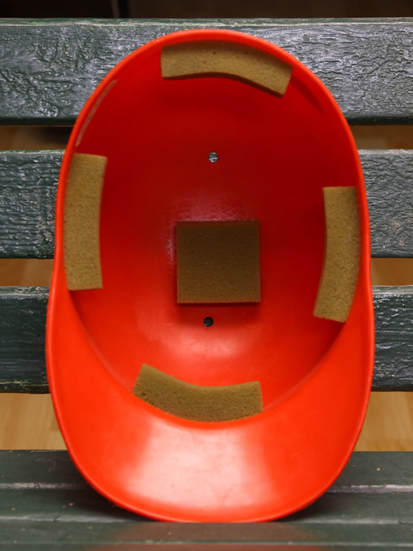
To me this is the original inside of the first souvenir batting helmets. It always consisted of five foam pads which were held in place by either some form of glue or sticky tape. In most of these older helmets the foam padding is missing or it is so soft and brittle from the elements working on it for the last 50-70 years that it is just sometimes better to remove it completely because it can be very messy. You can find this in both Bobbie Enterprise and Sports Product Corp. helmets.
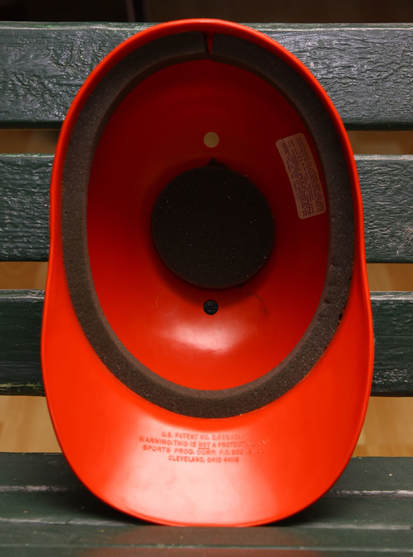
Personally, I have only found this type of foam insert in one helmet (Reds). Since I have never see this in to many other helmets, I am going to assume that this may have been a short-lived test that Sports Product Corp. was trying before they started using the Adjustrap.
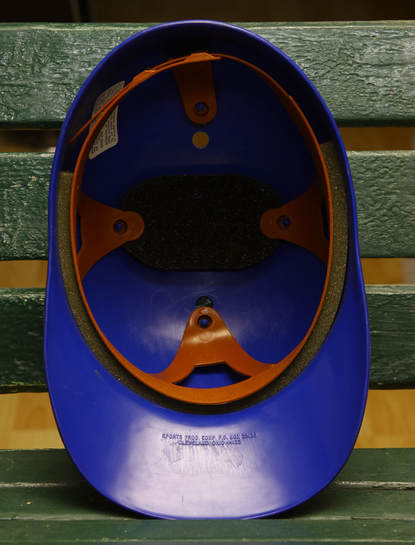
So, is this the helmet where Sports Products Corp. was testing their new Adjustrap in 1969 and wasn't for sure whether or not to remove all of the foam insert? Good question. These helmets appear from time to time and I'm guessing that the foam attached to the strap caused the helmet to slip less on the forehead.
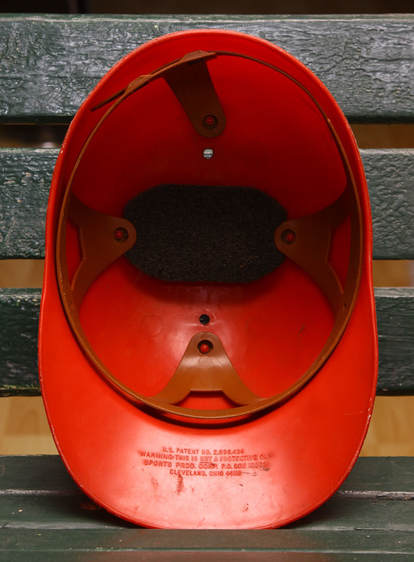
Again, is this another of those transition helmets by Sports Product Corp.? The foam that was attached to the strap is missing, but the foam attached to the top of the helmet is still there. There are no traces of any glue or foam residue on the strap of this helmet.
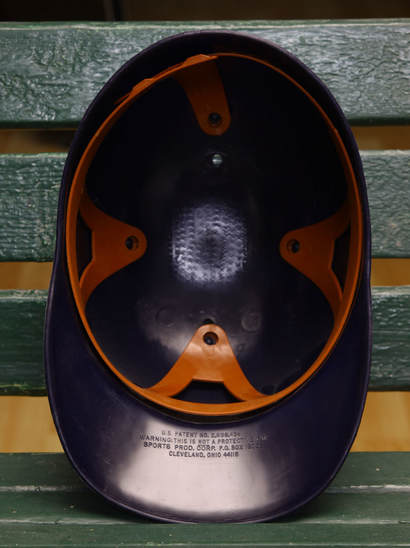
The final look and what I would say 85-90% of all the helmets still out there look like on the inside. There is no trace of foam anywhere, even though the roughed up edging in the top of the helmet still does exist. This is where so many people on eBay go wrong and think they have found some rare helmet from 1969 when actually it could be a helmet from 1999. That 1969 date is nothing more than copyright date so if you don't look up the years that logo existed then you don't really know what year the helmet is from.
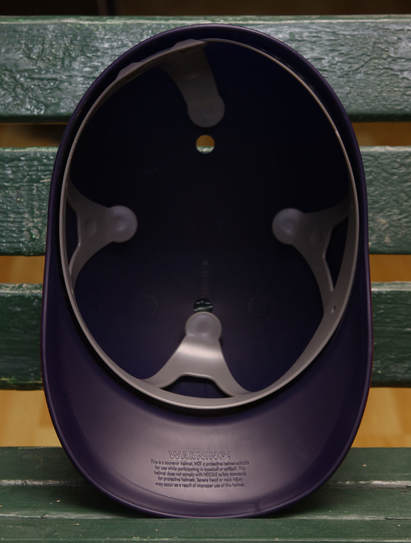
Yeah, it is still the Adjustrap but it now has a new owner. The gray liner is when Fotoball had it's short lived run before K2 Products started making the souvenir helmets. K2 also kept the gray liner and now the liner doesn't even identify K2, it says made in China. This started to occur when the outsourcing of labor began in the U.S. in the late 1990's to early 2000's.
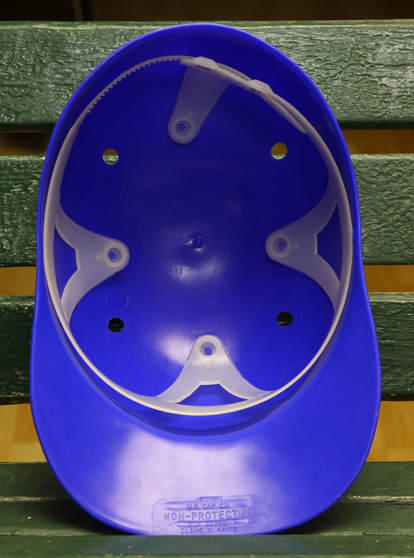
This is what the inside of the "duck bill" helmets, as I so affectionately call them, look like. There are no identifying features on the helmets and these helmets with these liners are all made by the U.S. Cap Co. The thing that I have always wondered about is if this company is in any way affiliated with Sports Product corp. because they are both based out of Cleveland.
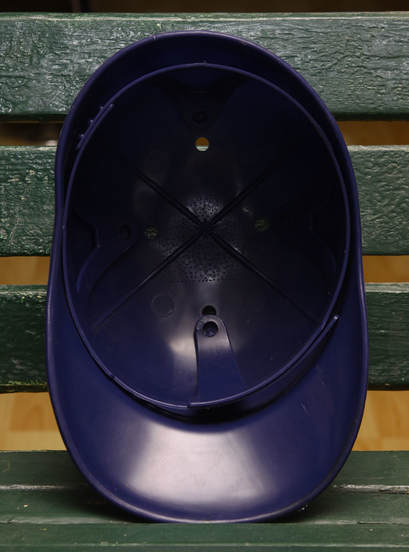
The inside of this helmet is literally out of this country. This helmet is an Expos helmet and is made in Montreal. The basic idea of the Adjustrap is there except that this strap has a slight variation on the adjustment process. This is more than likely the only helmet you will see this style of strap in.
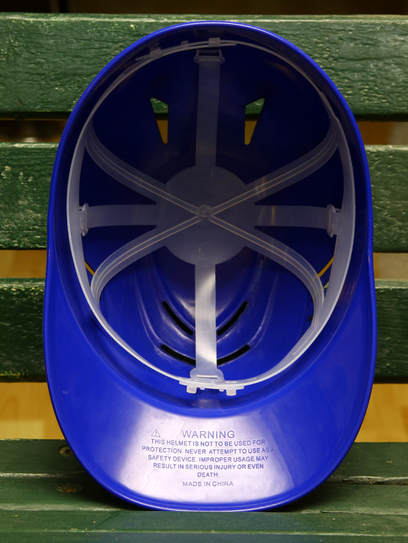
Ah, yes, and now for the new style vented helmets. This is what I like to call the "spider web" Adjustrap. There are no identifying features on the strap and the helmet has no company name listed on it, but yes, it of course is made in China. These tend to come in different colors.